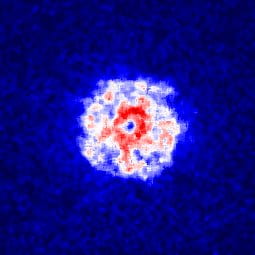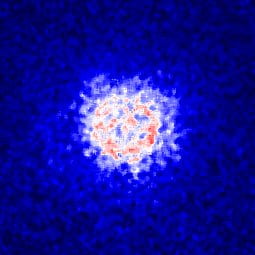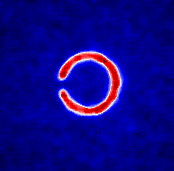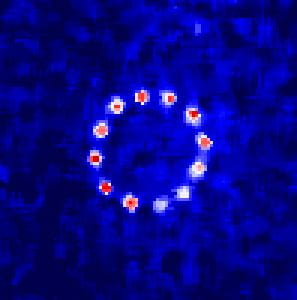We have produced persistent currents of ultracold fermionic atoms trapped in a toroidal geometry with lifetimes greater than 10 seconds in the strongly-interacting limit. These currents remain stable well into the BCS limit at sufficiently low temperature. We drive a circulating BCS superfluid into the normal phase and back by changing the interaction strength and find that the probability for quantized superflow to reappear is remarkably insensitive to the time spent in the normal phase and the minimum interaction strength. After ruling out the Kibble-Zurek mechanism for our experimental conditions, we argue that the reappearance of superflow is due to long-lived normal currents and the Hess-Fairbank effect.
Publication: Monolithic bowtie cavity traps for ultracold gases
The main results from our work trapping lithium-6 in a ring bowtie cavity have been accepted for publication and will appear in JOSA B this month. The DOI is 10.1364/JOSAB.401262 (arXiv preprint)

Persistent Currents in a Molecular BEC of Fermions
We have just shown that we can clearly distinguish between a ring with a persistent current flowing around it and a stationary superfluid (molecular BEC of Li-6). The basic procedure is to relax the radial confinement of the atoms in the ring trap in a prescribed way, then suddenly release the atoms completely and allow the cloud to expand for several milliseconds. If there is (quantized) circulation around the ring then we see a hole in the middle of the expanded cloud, because of the phase singularity that must be present in the superfluid. 
For comparison, if there is no circulation in the superfluid, then the expanded cloud looks like this:
Detecting the vortex signature in this expanding fermionic superfluid is a little more challenging to do well than in previous experiments with atomic Bose condensates (of e.g. rubidium or sodium). The cloud expands quite rapidly even for small numbers of atoms, because the momentum of the atoms is comparatively high due to degeneracy pressure. We’ve got a handle on this, though and it’s clearly not going to be an obstacle to the experiments we have planned. The images above mostly look noisy due to photon shot noise, and we expect to be able to do much better than this soon.
Stirring Beam Installed
Fermionic Atoms in Ring Lattices
The DMD we’ve been using to create patterned optical potentials can certainly do more than just a simple ring. We’ve just had a first successful attempt at loading ultracold lithium atoms into multi-site ring traps. We probably shouldn’t call them lattices yet since the lattice spacing is still a couple of microns and we don’t expect there to be much tunneling of atoms between the potential wells. Once we have the beam projection system fully optimized and get the lattice spacing down closer to 1 micron, we’ll see about conducting the first experiments with ultracold atoms in ring lattices.





